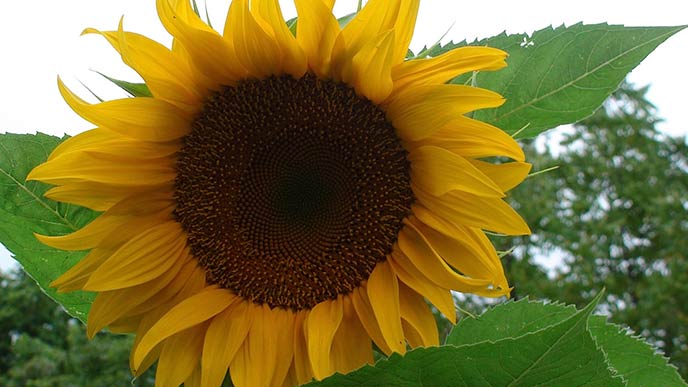Last updated: June 3, 2015
Lesson Plan
Day 2 of Biodiversity Bee Week: Flower Dissection / Insect Pollination

- Grade Level:
- Middle School: Sixth Grade through Eighth Grade
- Subject:
- Science
- Lesson Duration:
- 60 Minutes
- Additional Standards:
- Next Generation Science Standards:
LS1.B: Growth and Development of Organisms (MS-LS1-4) - Thinking Skills:
- Analyzing: Break down a concept or idea into parts and show the relationships among the parts.
Objective
What adaptations do flowers have to ensure their pollination and survival?
Students will
• Observe and dissect the parts of flowers that help them survive
• Compare the form of the structural adaptations of a flower to their functions
• Explain how the adaptations allow flowers to survive
Background
In the mid to late 2000’s, beekeepers noticed a problem with their bees. Bees were leaving the hives during the day and not returning. Their hives were not thriving. Thousands of bees were dying, threatening the livelihood of many beekeepers and the pollination of thousands of plants, including crops upon which we rely for food. Scientists investigated the die-off of the bees, calling the problem “Colony Collapse Disorder” (CCD). Unsure of the cause(s), scientists collected data on the numbers of bees being lost each year. The numbers were staggering: 2006-07 saw a 32 percent decline in bee numbers, 2007-08 saw a 36 percent decline in bee numbers, and 2008-09 saw a 29 percent decline in bee numbers. There has been an overall decline or leveling off in the percent of bee losses through the years, with the losses at 23.2 percent for winter 2013-14. Beekeepers consider 18.9 percent as a level that is acceptable for bee loss each year in order to sustain their populations (Kaplan, 2014).
We are dependent upon bees for our own survival. Members of the Apidae family (honeybees, bumblebees, carpenter bees, etc…) are the “pollinators of the agricultural world.” Bees are vital to the health of our food supply and also wild plant pollination. Their bodies are covered with hair which allows them to pick up pollen and transfer it from plant to plant to promote pollination. Bees are responsible for pollinating one third of the food that we consume on a daily basis; their loss would mean that our food supply would be dramatically reduced. Also, pollinators are very important for maintaining and creating our wild plant populations, basic habitat for wildlife, and to support crops that feed grazing animals, such as cows (Michigan, 2014; Tucker, 2014).
Currently, bee decline appears to have leveled off, but the causes still remain unknown. There are many theories about the reasons for the decline in bee populations. Ideas include global warming, causing flowers to bloom at different times; loss of habitat and diversity in pollen sources due to development; pesticide use on farms; parasites, such as mites; or perhaps a combination of these factors (Sass, 2011).
This one-week module is designed to expose middle-school students to the issue of Colony Collapse Disorder and to give them background knowledge to help understand this problem. Knowledge is the first step towards understanding and becoming an agent of change to help solve this problem.
Preparation
Flowers, Scissors, Magnifying Glass, Resource Materials (textbook, internet), Tape (optional)
Sometimes, flower shops will donate “older” but still usable flowers to schools for educational use.
Download lesson plan, then print out and copy the worksheet for each student.
Materials
Students will dissect a flower to learn the different flower parts and how they are built to ensure pollination and survival.
Download Day 2 Worksheet: Flower Dissection / Insect Pollination
Printer-friendly lesson plans for all days of Biodiversity Bee Week (a middle school curriculum and activity guide for Bee Awareness).
Download Biodiversity Bee Week Curriculum
Lesson Hook/Preview
Flowers for the lab should be displayed in a central area where students can look at them. The instructor will write this statement on board for students to answer: Give five examples of how the flowers are different and five examples of how the flowers are alike.
Procedure
Flower Dissection Lab
Students will explore the parts of a flower while dissecting a real flower. For the lab, the instructor will need flowers. Sometimes, flower shops will donate “older” but still usable flowers to schools for educational use.
As bees are collecting pollen for their hive, their body hair also picks up pollen from the anther of the plant. As the bee moves to another flower, the pollen from the anther is deposited on the sticky top of the new flower’s stigma, where it travels down to the ovary to fertilize the flower’s eggs.
Vocabulary
dissection, sepals, petals, pistil, stigma, style, ovary, stamen, anther, filament
Assessment Materials
Recall CardOn a 3x5 note card, students will write three things that they learned about the structures of a flower. This note card will be a student’s ticket out the door.
Additional Resources
Download the lesson plan for additional resources and links.
For other education resources, webcasts, and webinars, Pollinator LIVE: a distance learning adventure is a great website, and is sponsored by federal and private partners.
Related Lessons or Education Materials
This is Day 2 of 5 in the Biodiversity Bee Week curriculum for middle school students.
